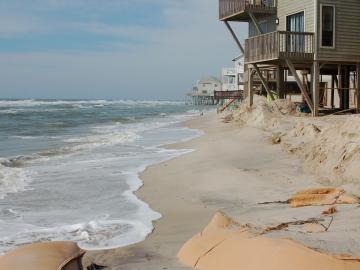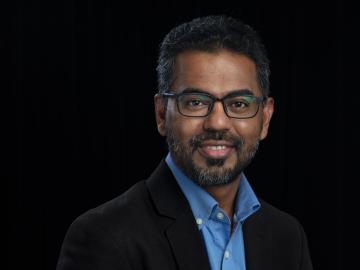
Filter News
Area of Research
News Type
News Topics
- (-) Advanced Reactors (5)
- (-) Artificial Intelligence (42)
- (-) Energy Storage (11)
- (-) Machine Learning (16)
- (-) Nanotechnology (5)
- (-) Nuclear Energy (18)
- (-) Physics (13)
- (-) Security (12)
- 3-D Printing/Advanced Manufacturing (29)
- Big Data (22)
- Bioenergy (15)
- Biology (18)
- Biomedical (16)
- Biotechnology (9)
- Buildings (24)
- Chemical Sciences (24)
- Clean Water (2)
- Composites (11)
- Computer Science (51)
- Critical Materials (6)
- Cybersecurity (3)
- Education (2)
- Emergency (2)
- Environment (27)
- Exascale Computing (25)
- Fossil Energy (3)
- Frontier (21)
- Fusion (13)
- Grid (16)
- High-Performance Computing (41)
- Hydropower (1)
- Isotopes (22)
- ITER (1)
- Materials (20)
- Materials Science (25)
- Mathematics (4)
- Microelectronics (2)
- Microscopy (5)
- Molten Salt (2)
- National Security (33)
- Neutron Science (27)
- Partnerships (29)
- Polymers (5)
- Quantum Computing (20)
- Quantum Science (24)
- Simulation (18)
- Space Exploration (4)
- Statistics (3)
- Summit (15)
- Transportation (15)
Media Contacts

A study found that beaches with manmade fortifications recover more slowly from hurricanes than natural beaches, losing more sand and vegetation. The researchers used satellite images and light detection and ranging data, or LIDAR, to measure elevation changes and vegetation coverage. Changes in elevation showed how much sand was depleted during the storm and how much sand returned throughout the following year.

At ORNL, a group of scientists used neutron scattering techniques to investigate a relatively new functional material called a Weyl semimetal. These Weyl fermions move very quickly in a material and can carry electrical charge at room temperature. Scientists think that Weyl semimetals, if used in future electronics, could allow electricity to flow more efficiently and enable more energy-efficient computers and other electronic devices.

Benjamin Manard, an analytical chemist in the Chemical Sciences Division of the Department of Energy’s Oak Ridge National Laboratory, will receive the 2024 Lester W. Strock Award from the Society of Applied Spectroscopy.

Seven entrepreneurs comprise the next cohort of Innovation Crossroads, a DOE Lab-Embedded Entrepreneurship Program node based at ORNL. The program provides energy-related startup founders from across the nation with access to ORNL’s unique scientific resources and capabilities, as well as connect them with experts, mentors and networks to accelerate their efforts to take their world-changing ideas to the marketplace.

Prasanna Balaprakash, director of AI programs at the Department of Energy’s Oak Ridge National Laboratory, has been appointed to Tennessee’s Artificial Intelligence Advisory Council.

Scientists have determined that a rare element found in some of the oldest solids in the solar system, such as meteorites, and previously thought to have been forged in supernova explosions, actually predate such cosmic events, challenging long-held theories about its origin.

Two ORNL teams recently completed Cohort 18 of Energy I-Corps, an immersive two-month training program where the scientists define their technology’s value propositions, conduct stakeholder discovery interviews and develop viable market pathways.

Researchers at the Department of Energy’s Oak Ridge National Laboratory and partner institutions have launched a project to develop an innovative suite of tools that will employ machine learning algorithms for more effective cybersecurity analysis of the U.S. power grid.
The contract will be awarded to develop the newest high-performance computing system at the Oak Ridge Leadership Computing Facility.

To better predict long-term flooding risk, scientists at the Department of Energy’s Oak Ridge National Laboratory developed a 3D modeling framework that captures the complex dynamics of water as it flows across the landscape. The framework seeks to provide valuable insights into which communities are most vulnerable as the climate changes, and was developed for a project that’s assessing climate risk and mitigation pathways for an urban area along the Southeast Texas coast.


